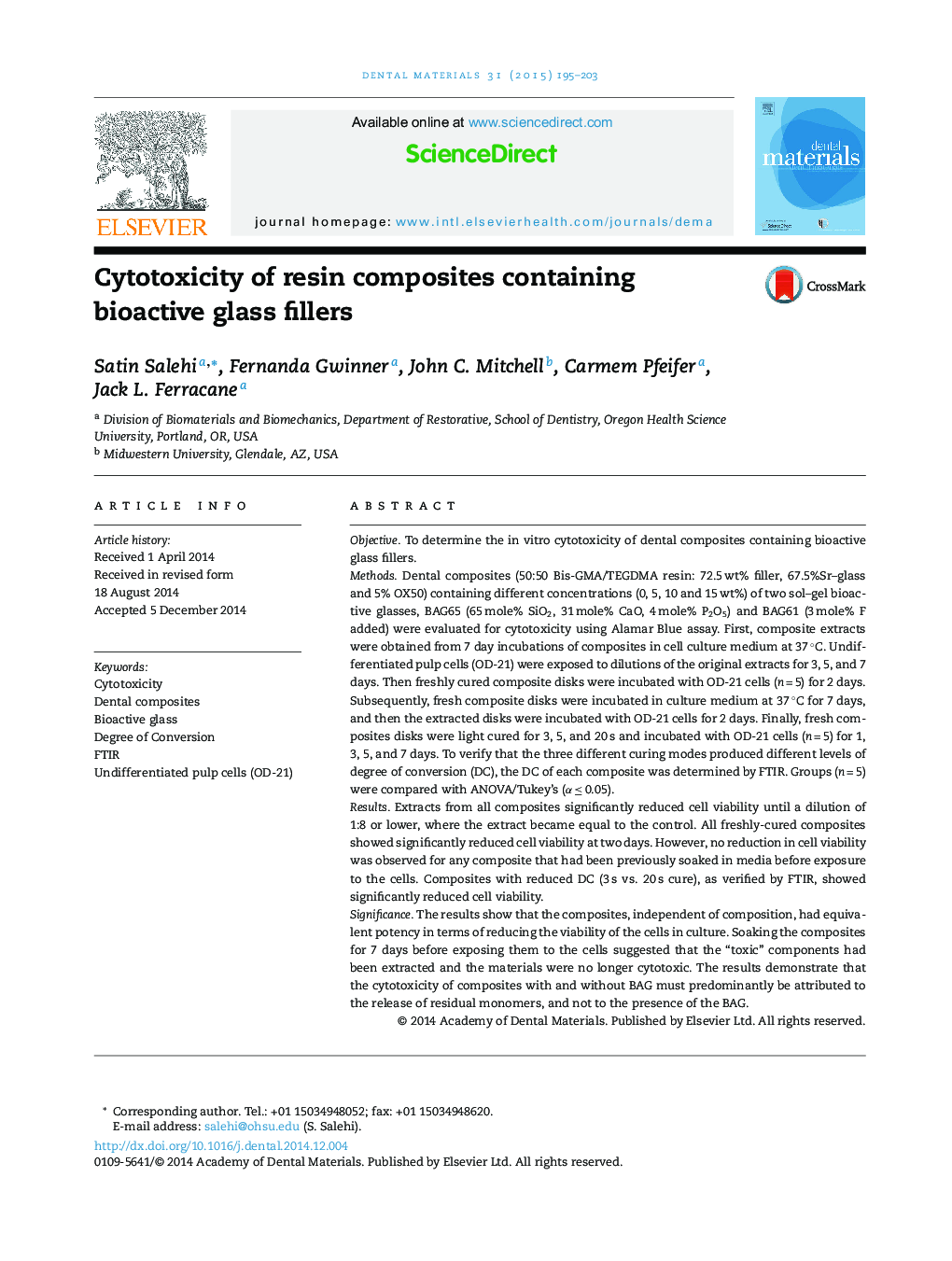| کد مقاله | کد نشریه | سال انتشار | مقاله انگلیسی | نسخه تمام متن |
|---|---|---|---|---|
| 1420616 | 986375 | 2015 | 9 صفحه PDF | دانلود رایگان |
• The results show that the composites, independent of composition, had equivalent potency in terms of reducing the viability of the cells in culture.
• Soaking the composites for 7 days before exposing them to the cells suggested that the “toxic” components had been extracted and the materials were no longer cytotoxic.
• The results demonstrate that the cytotoxicity of composites with and without BAG must predominantly be attributed to the release of residual monomers, and not to the presence of the BAG.
ObjectiveTo determine the in vitro cytotoxicity of dental composites containing bioactive glass fillers.MethodsDental composites (50:50 Bis-GMA/TEGDMA resin: 72.5 wt% filler, 67.5%Sr–glass and 5% OX50) containing different concentrations (0, 5, 10 and 15 wt%) of two sol–gel bioactive glasses, BAG65 (65 mole% SiO2, 31 mole% CaO, 4 mole% P2O5) and BAG61 (3 mole% F added) were evaluated for cytotoxicity using Alamar Blue assay. First, composite extracts were obtained from 7 day incubations of composites in cell culture medium at 37 °C. Undifferentiated pulp cells (OD-21) were exposed to dilutions of the original extracts for 3, 5, and 7 days. Then freshly cured composite disks were incubated with OD-21 cells (n = 5) for 2 days. Subsequently, fresh composite disks were incubated in culture medium at 37 °C for 7 days, and then the extracted disks were incubated with OD-21 cells for 2 days. Finally, fresh composites disks were light cured for 3, 5, and 20 s and incubated with OD-21 cells (n = 5) for 1, 3, 5, and 7 days. To verify that the three different curing modes produced different levels of degree of conversion (DC), the DC of each composite was determined by FTIR. Groups (n = 5) were compared with ANOVA/Tukey's (α ≤ 0.05).ResultsExtracts from all composites significantly reduced cell viability until a dilution of 1:8 or lower, where the extract became equal to the control. All freshly-cured composites showed significantly reduced cell viability at two days. However, no reduction in cell viability was observed for any composite that had been previously soaked in media before exposure to the cells. Composites with reduced DC (3 s vs. 20 s cure), as verified by FTIR, showed significantly reduced cell viability.SignificanceThe results show that the composites, independent of composition, had equivalent potency in terms of reducing the viability of the cells in culture. Soaking the composites for 7 days before exposing them to the cells suggested that the “toxic” components had been extracted and the materials were no longer cytotoxic. The results demonstrate that the cytotoxicity of composites with and without BAG must predominantly be attributed to the release of residual monomers, and not to the presence of the BAG.
Journal: Dental Materials - Volume 31, Issue 2, February 2015, Pages 195–203
